Unfortunately, the stylish denim face masks pictured in these old Wrangler ads (designed by Tycoon Graphics) are not available at the local department store.

[+]

[+]
Unfortunately, the stylish denim face masks pictured in these old Wrangler ads (designed by Tycoon Graphics) are not available at the local department store.

[+]

[+]
Via KomadoriBrothers comes a stellar pair of action-packed doll animations shot in glorious 8mm.
"CAT's EYE PV by Japanese BARBIE" (Hirofumi Okamura, 1984) stars Licca-chan (a.k.a. "Japanese Barbie") in a riveting short film set to the theme song from the early-80s anime Cat's Eye.
And "Sailor-suited Fighter NANAMI-chan" (Satoshi Imai, 1988) kicks it up a notch with spectacular special effects and epic battles against Kuidaore Taro (Osaka's iconic clown mannequin) and a giant crab ship piloted by foreign invaders.
A 3-millimeter-thick digital booth babe is drawing double-takes in Tokyo.
+ Video
Spotted at the International Stationery and Office Products Fair, this eye-catching digital signage system consists of a 0.3-millimeter-thick high-luminance rear-projection film (Vikuiti Rear Projection Film developed by 3M) applied to a 3-millimeter-thick glass substrate cut into the shape of a woman. A rear projector beams video onto the film, whose microbead-arrayed surface produces a crisp, brilliant image viewable from any angle, even in brightly lit environments.
[Source: Robot Watch]
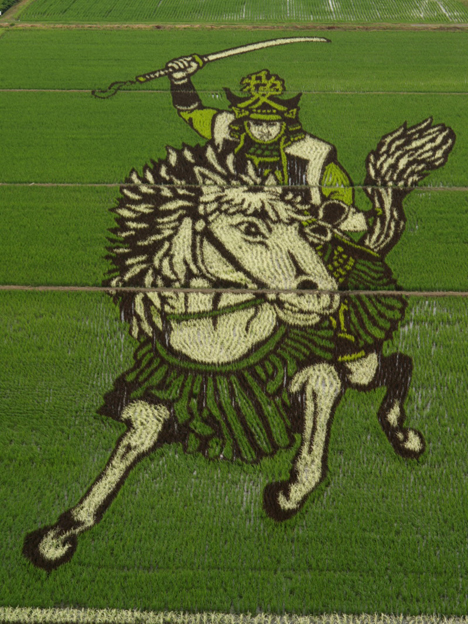
Sengoku-period warrior [Photo]
As summer progresses, crops of rice paddy art are beginning to emerge in Japan. The crop art -- created by strategically arranging and growing different colors of rice plants -- can be seen in farming communities across the country. The largest and finest work is grown in the Aomori prefecture village of Inakadate, which has earned a reputation for its agricultural artistry. This year the enormous pictures of Napoleon and a Sengoku-period warrior, both on horseback, are visible in a pair of fields adjacent to the town hall there.
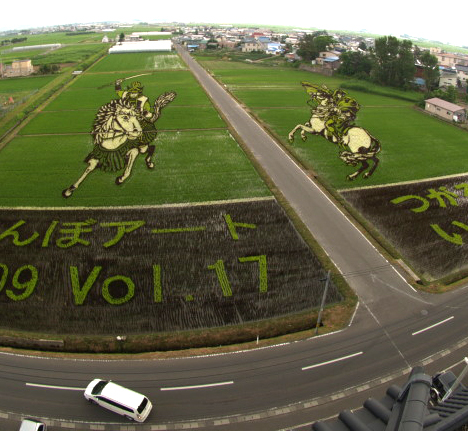
View from roof of Inakadate town hall [Photo]
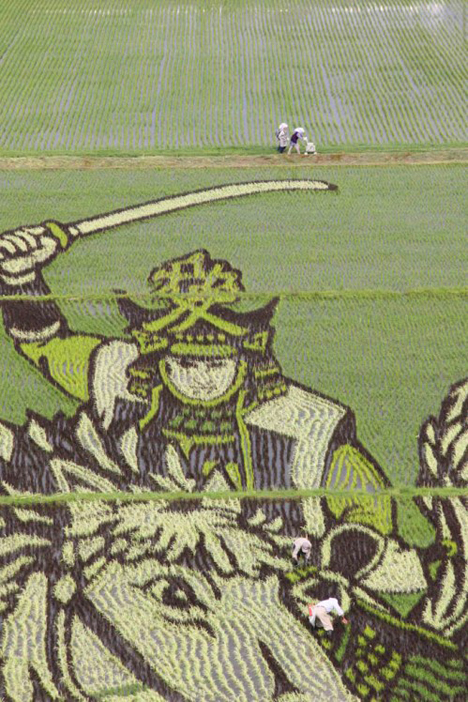
Warrior [Photo]

Napoleon [Photo]

View from top of warrior's head [Photo]

Warrior's arm [Photo]
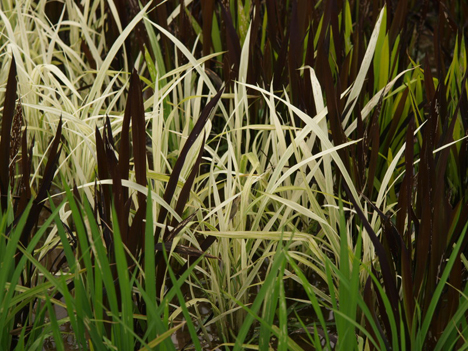
Close-up of rice plants [Photo]
* * * * *
Another relatively famous rice paddy art venue is located in the town of Yonezawa in Yamagata prefecture. This year's work depicts the 16th-century samurai Naoe Kanetsugu and his wife, Osen, whose lives are chronicled in Tenchijin, the popular, year-long historical fiction television series now airing on NHK.

Naoe Kanetsugu and Osen [Photo: contri]
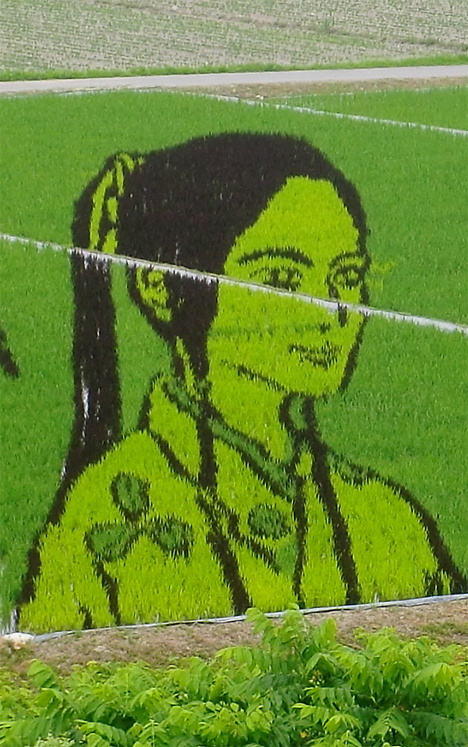
Osen [Photo]
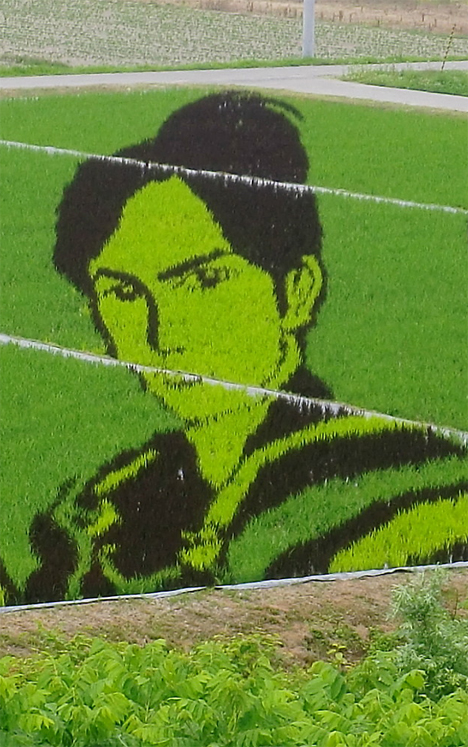
Naoe Kanetsugu [Photo]

View from top of Naoe Kanetsugu's head [Photo]
* * * * *
Smaller works of crop art can be seen in other rice-farming areas of Japan. Here are a few more examples.
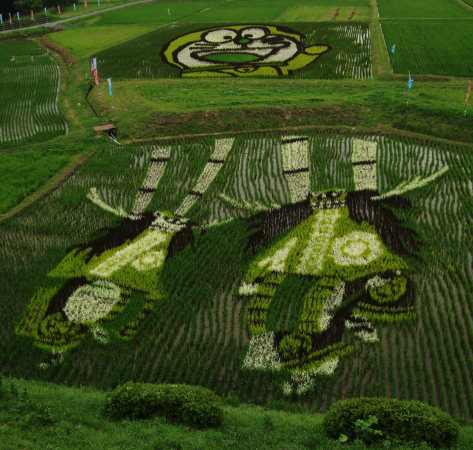
Doraemon and deer dancers (shishi-odori), location unknown [Photo]
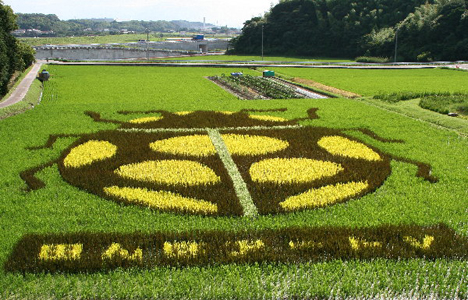
Ladybug, Nishio, Aichi prefecture [Photo]
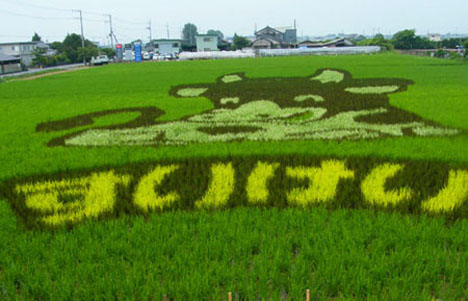
Cow, Omi-Hachiman, Shiga prefecture [Photo]
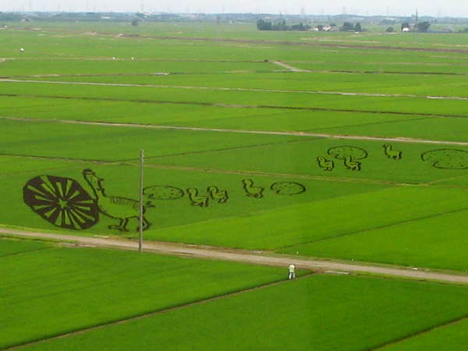
Ducks, near Fukushimagata Lagoon Water Park, Niigata prefecture [Photo]
Japanese researchers monitoring the activity of giant jellyfish in Chinese waters are warning of a potentially historic and catastrophic invasion this year.
Marine surveys conducted in late June have revealed alarming numbers of Nomura's jellyfish -- massive creatures that grow up to 2 meters (6 ft 7 in) in diameter and weigh as much as to 220 kilograms (about 450 lbs) -- lurking in the Yellow Sea and East China Sea. The researchers warn that ocean currents may bring swarms of the monster jellies to Japan, which has been plagued by similar invasions in recent years.
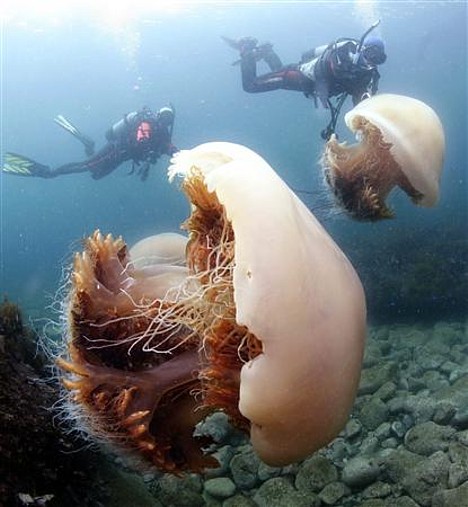
Nomura's jellyfish, 2007 (Photo: Sankei)
Based on what they have seen so far, the researchers warn this year's onslaught of Nomura's jellyfish (Nemopilema nomurai, or Echizen kurage in Japanese) could deliver a massive blow to Japan's fishing industry, rivaling even the devastating 2005 deluge that caused tens of billions of yen (hundreds of millions of dollars) in damage nationwide.
The surveys are being conducted by a team led by Shinichi Ue, a professor of biological oceanography at Hiroshima University who also chairs a government research committee tasked with developing technology to predict and control jellyfish explosions. Ue has been monitoring the population density of Nomura's jellyfish in the southern Yellow Sea and northern East China Sea since 2006.
Between June 20 and 24, 2009, Ue's team observed numerous specimens with umbrellas measuring 10 to 50 centimeters across, and they calculated an average distribution of 2.14 jellyfish per 100 square meters. This figure is more than 200 times higher than the 0.01 jellyfish per 100 square meters observed in the same region in 2008. It is also nearly triple the 0.77 jellyfish per 100 square meters observed in 2007, when the fishing industry in the Sea of Japan suffered widespread damage.
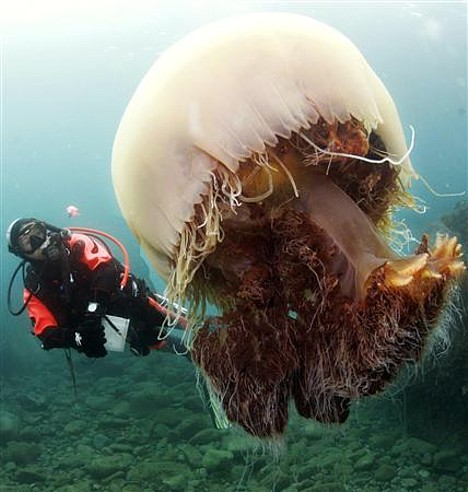
Nomura's jellyfish, 2007 (Photo: Sankei)
To make matters worse, this year's swarms appear to be taking a more direct and southerly route to Japan, unlike in 2007 when the jellyfish appeared to take a more northerly route, approaching the Sea of Japan coast from the direction of Korea. According to the researchers, the ocean currents could bring unprecedented numbers of Nomura's jellyfish to Japan's Pacific coast, which typically sees far fewer of the monster blobs than the Sea of Japan coast.
Nomura's jellyfish typically bloom in Chinese waters in spring, and they mature into adults as ocean currents slowly carry them north. By July, when the first swarms reach Tsushima (just north of the southern island of Kyushu), many jellyfish are as large as sumo wrestlers. At this size, it only takes about 5 or 10 of them to destroy a commercial fishing net.
In addition to damaging nets, the giant jellyfish are blamed for killing other fish with their venom, lowering the quality and quantity of catches, increasing the risk of capsizing trawlers, and stinging fishermen.
In 2005, the fishing industry reported over 100,000 cases of jellyfish-related damage nationwide. At the peak of the invasion that year, an estimated 300 to 500 million monster jellyfish passed through the Tsushima Strait into the Sea of Japan each day.
[Source: Asahi]
+ Video
The Fiat Cinque Tank, a dream bulldozer custom-built by ironsmith Kogoro Kurata, consists of an old Fiat 500 body mounted on the caterpillar tracks of a cheap secondhand tractor. The farm machine can only reach a speed of 3 kilometers per hour, turning a trip to the nearest convenience store into a 2-hour adventure, according to Kurata. But the classic look of the cabin no doubt impresses the neighbors, and the working power shovel comes in handy when obstacles block the way.
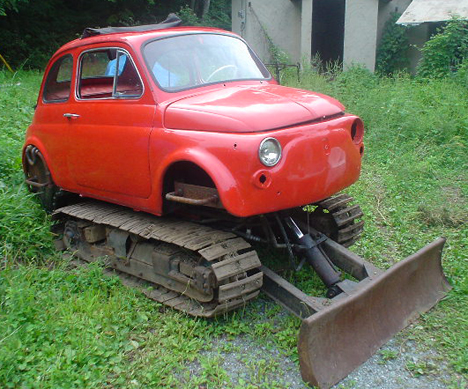
See Kurata's site for photos documenting the construction process: 1, 2, 3, 4.
[Link: Monkey Farm]
Ballpoint pen artist Shohei Otomo mashes up old and new in bold illustrations spiked with heavy doses of manga-style gore and perversion.
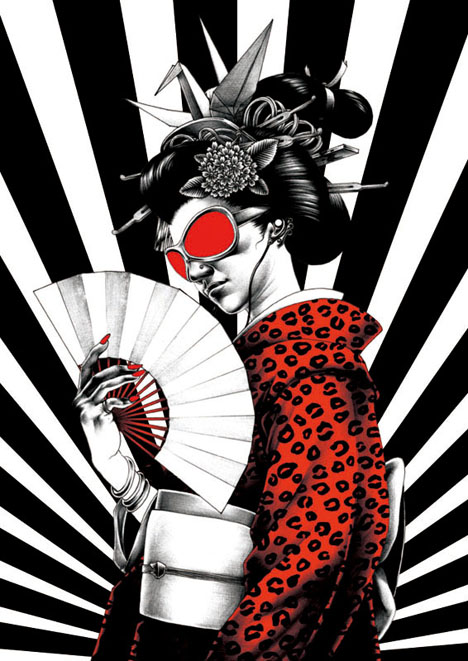
Sunglassed Geisha
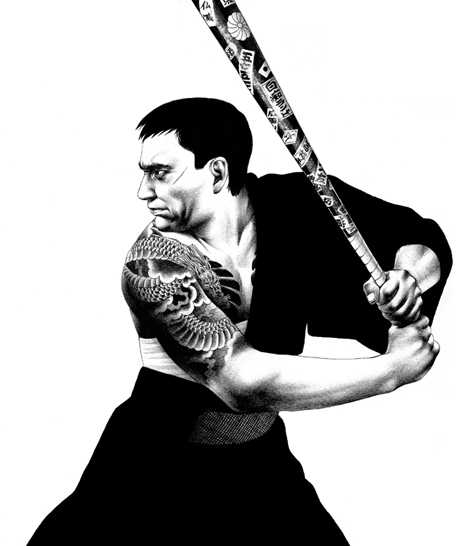
Boss Batter
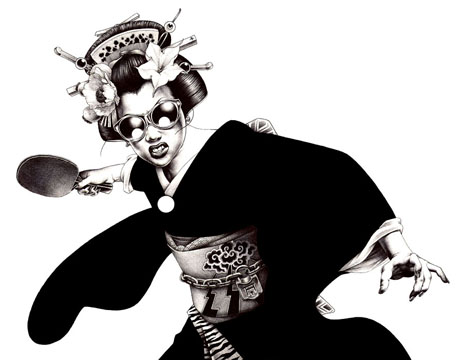
Onsen Ping Pong Geisha
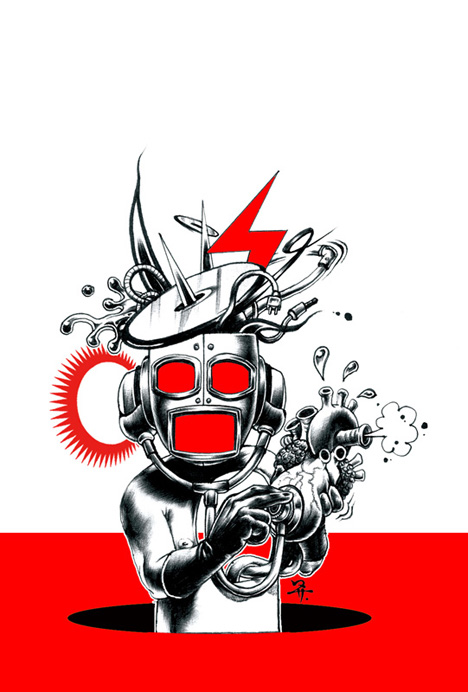
Gurgling Heart
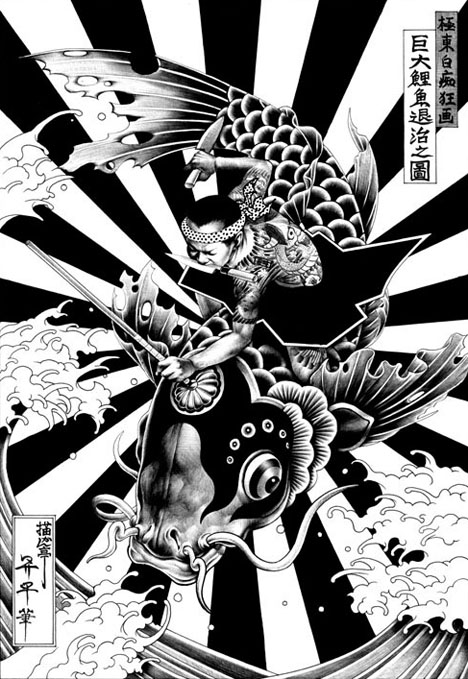
Extermination of Giant Carp

Portrait of a Far East Hoodlum - #1
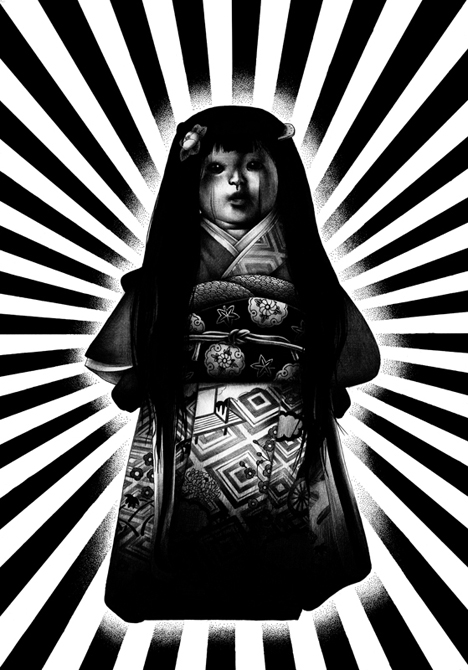
Okiku Doll
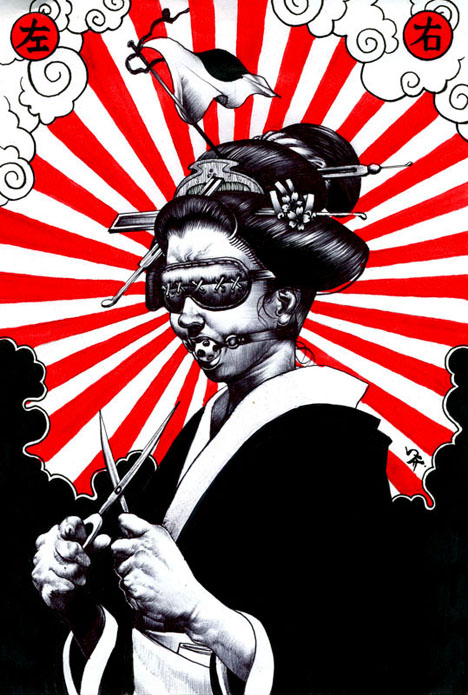
SM Geisha
See Shohei Otomo's website for much more. (Many images NSFW.)
[Via: Bouncing Red Ball]
Just in time for the 30th anniversary festivities comes this girlie Gundam, a jewel-encrusted RX-78-2 (apparently created by a Taiwanese fan) looking pretty in pink and lace.
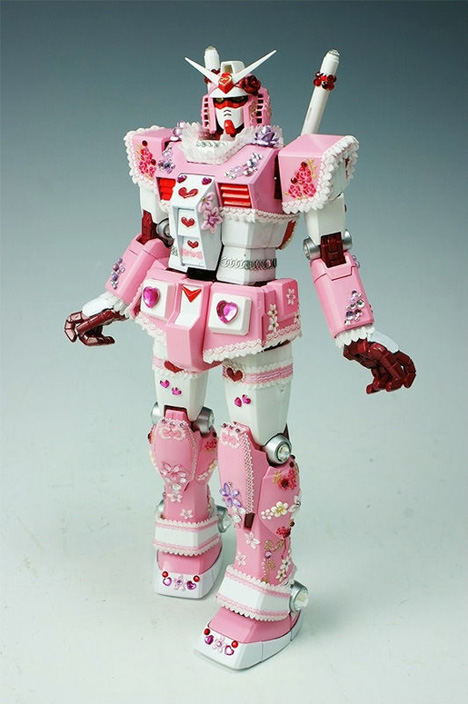
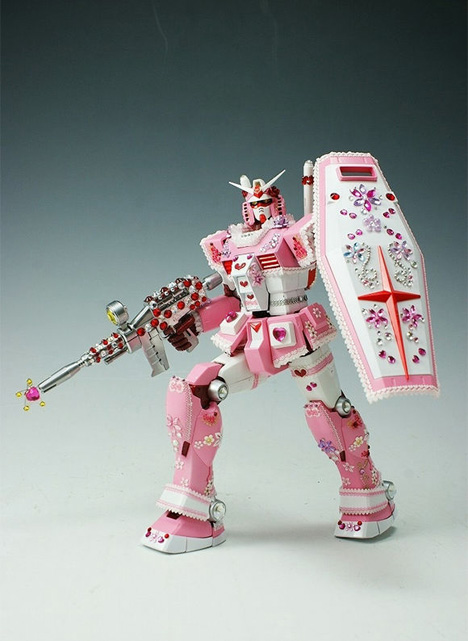
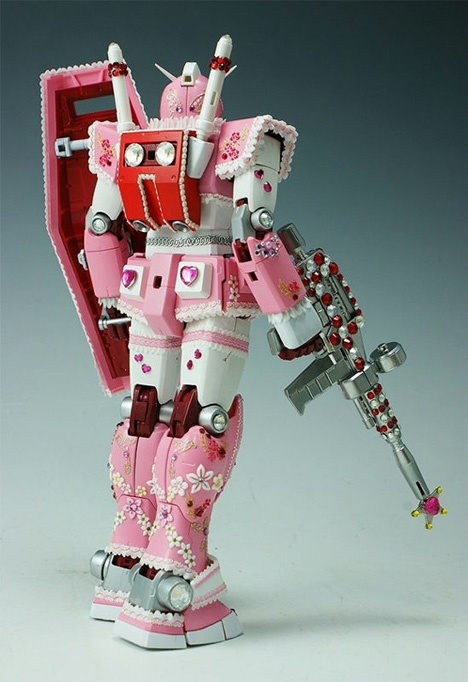
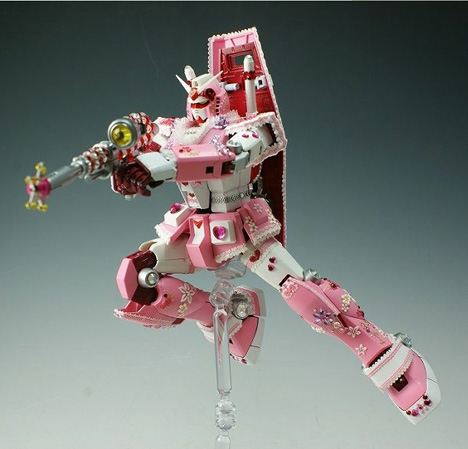
[Via Gigazine]
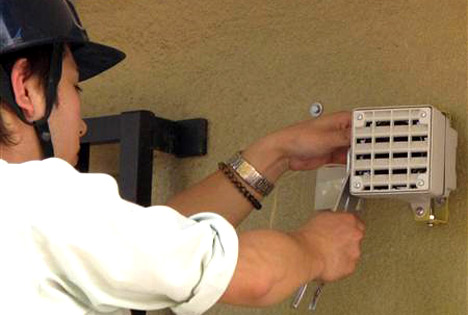
A vandalized toilet at Kitashikahama Park in Tokyo's Adachi ward is raising questions about the effectiveness of the park's controversial new "Mosquito" alarm -- a device designed to repel teenagers by emitting an obnoxious high-frequency tone that only they can hear.
The Mosquito, which was installed at the park on May 21 to discourage teens from hanging out there after hours, now operates every night from 11:00 PM to 4:00 AM. The device produces a high-pitched tone of around 17 kHz, which is unbearable to teen ears. The sound has no effect on older people, as the ability to hear high frequencies declines naturally with age.
The broken toilet, which was discovered on the morning of June 21, appears to have been smashed with a baseball bat. Spent bottle rockets were also found at the site.
Surveillance camera footage showed what appeared to be as many as seven teenagers hanging out in the park in the early morning hours of June 21, while the Mosquito was in operation. Authorities were unable to determine whether the teens in the video were responsible for the vandalism.
According to Adachi ward officials, teen vandals inflicted 700,000 yen ($7,400) worth of damage in the park last year. Unable to solve the problem with extra patrols, the authorities began searching for new measures. They eventually turned their attention to the Mosquito, which is already in use at some Tokyo-area convenience stores plagued by loitering teens.
The prospect of using the Mosquito has been controversial, and critics question whether it is in the city's interest to use such a device that discriminates against young people as a group, even if they are responsible for causing problems. In the end, the officials decided to test the device at the park until March 2010.
The smashed toilet is first case of vandalism at the park since the Mosquito was installed.
[Source: MBS]